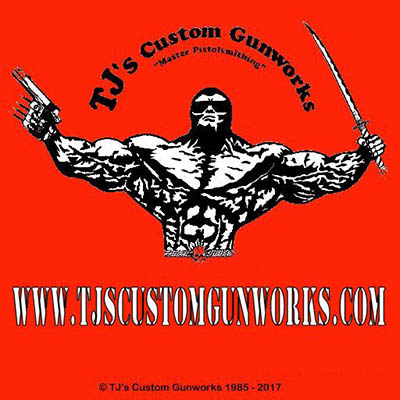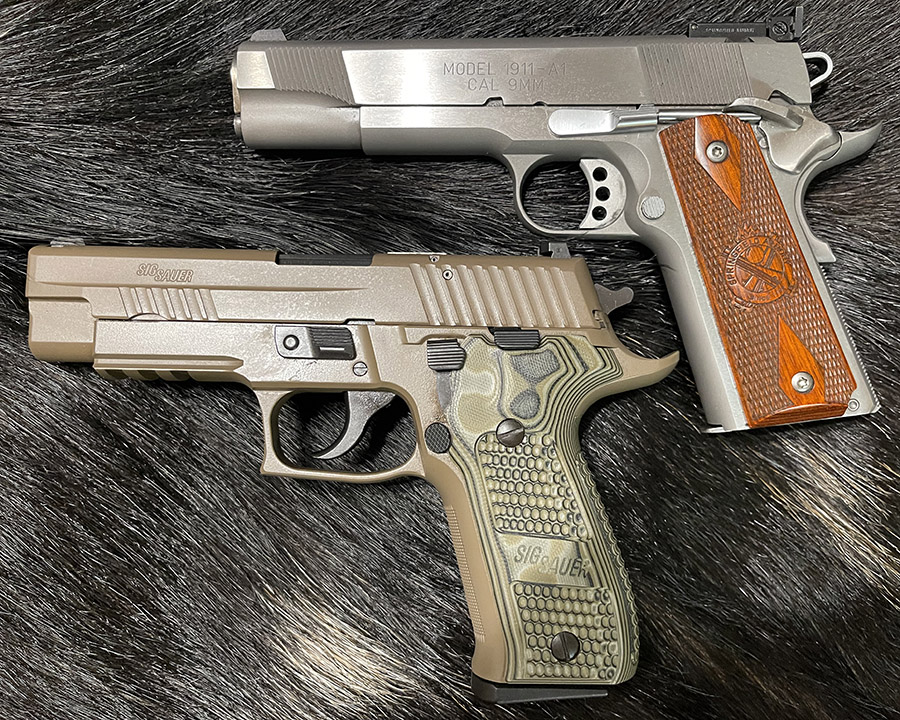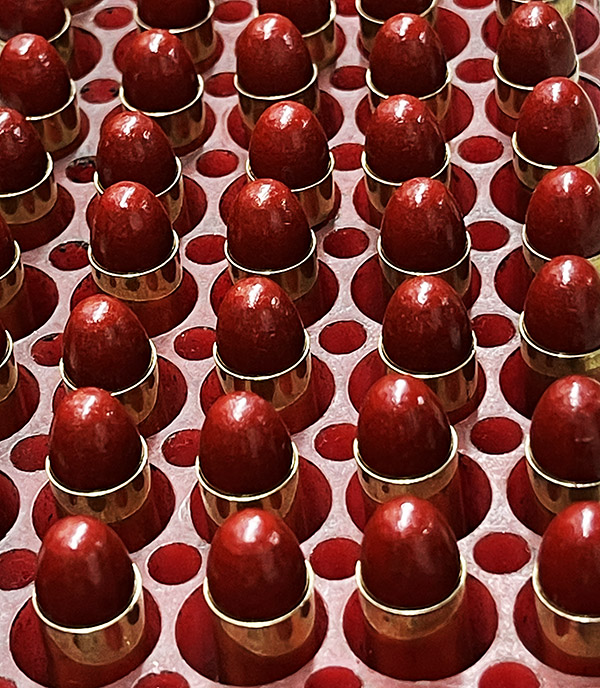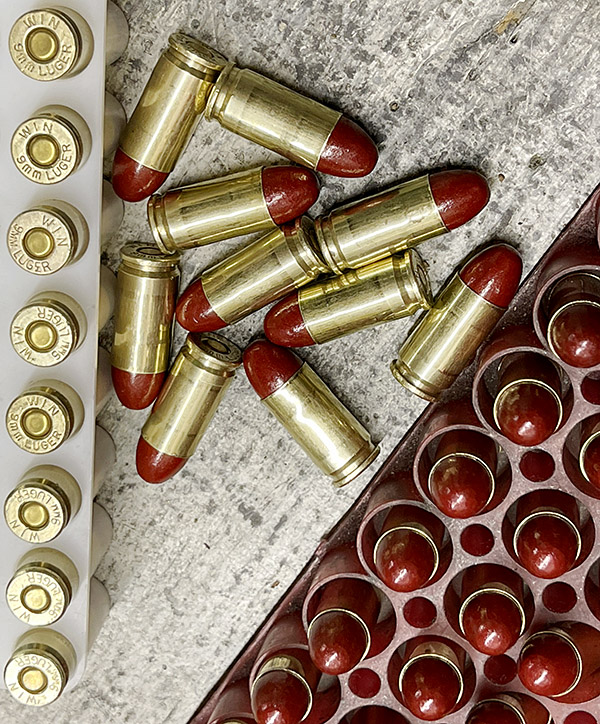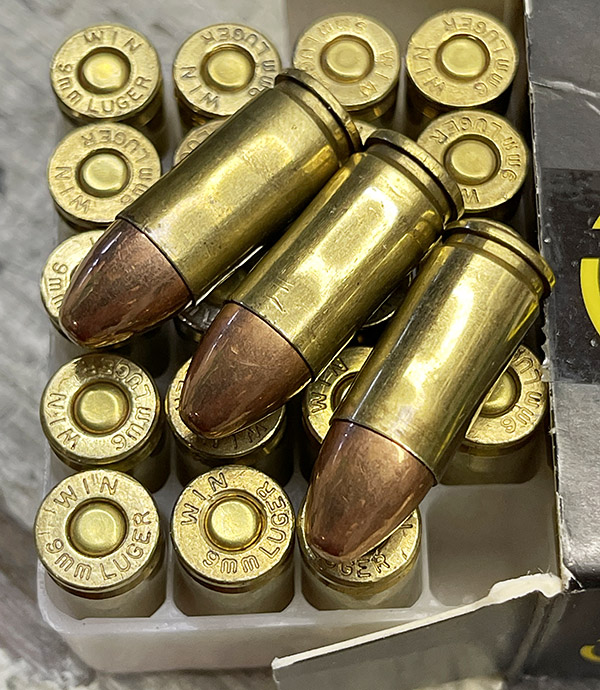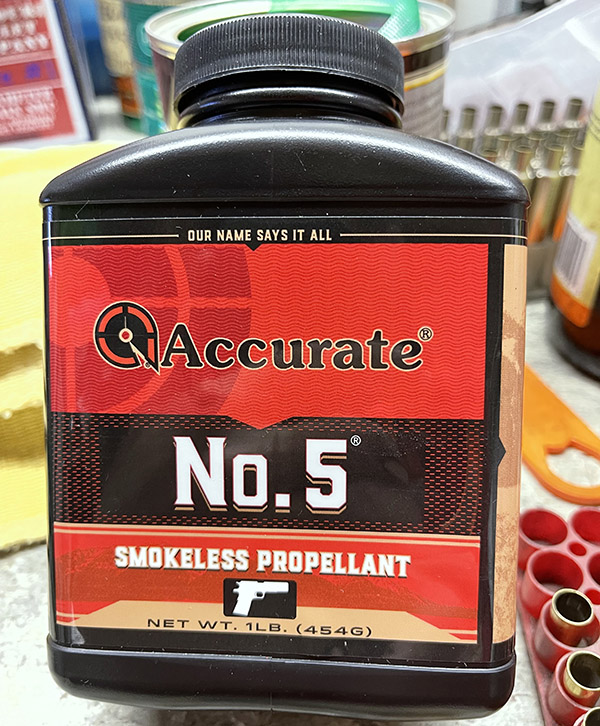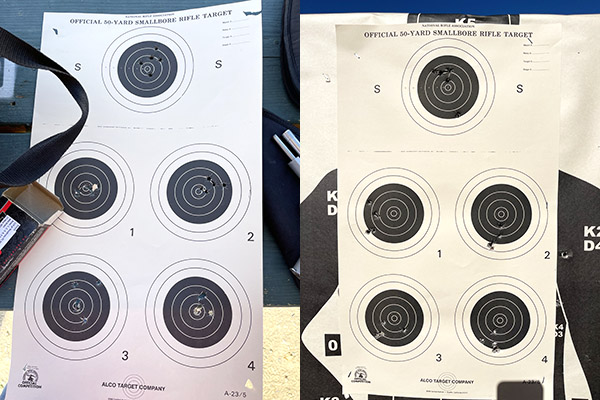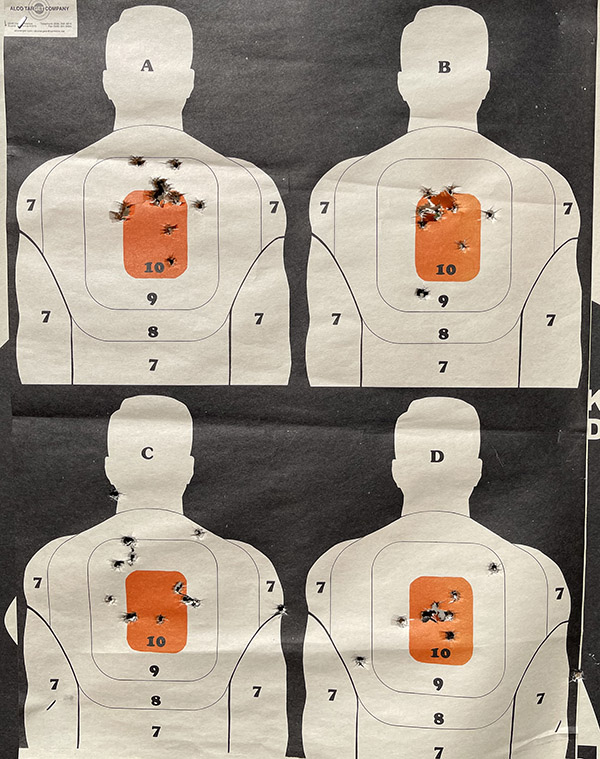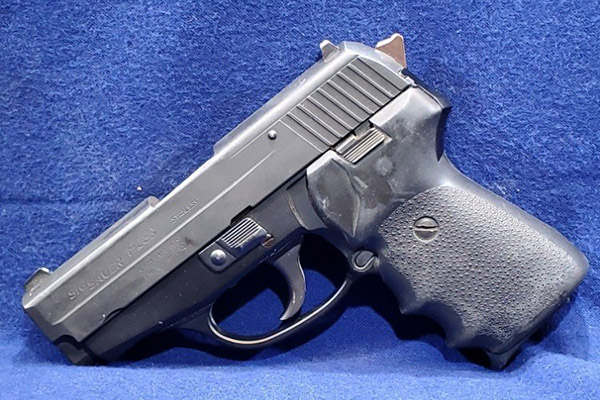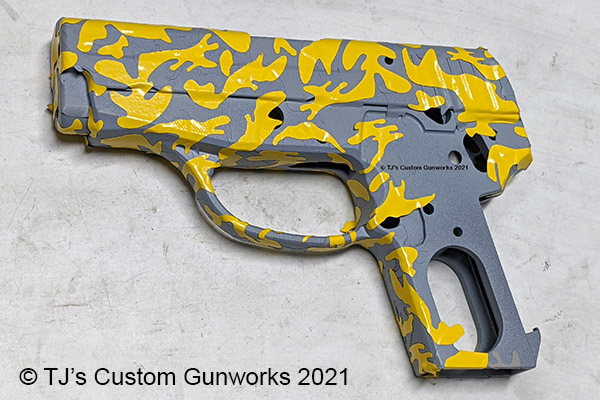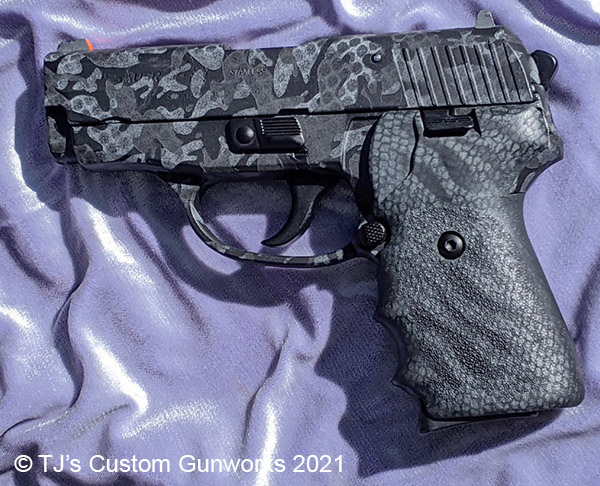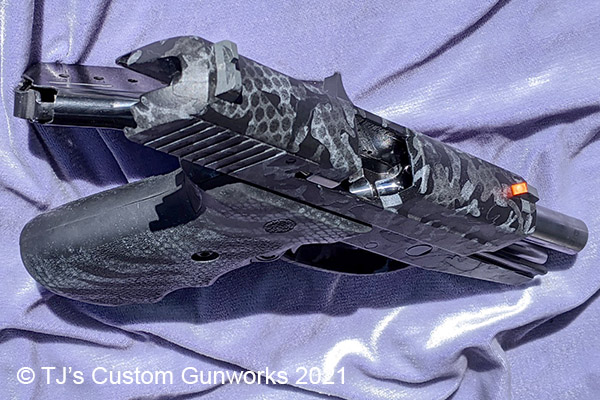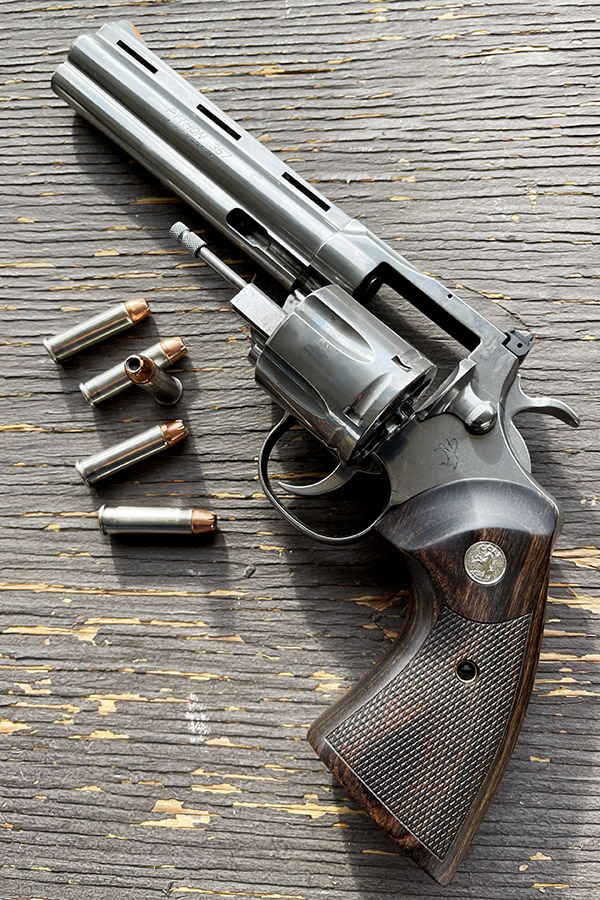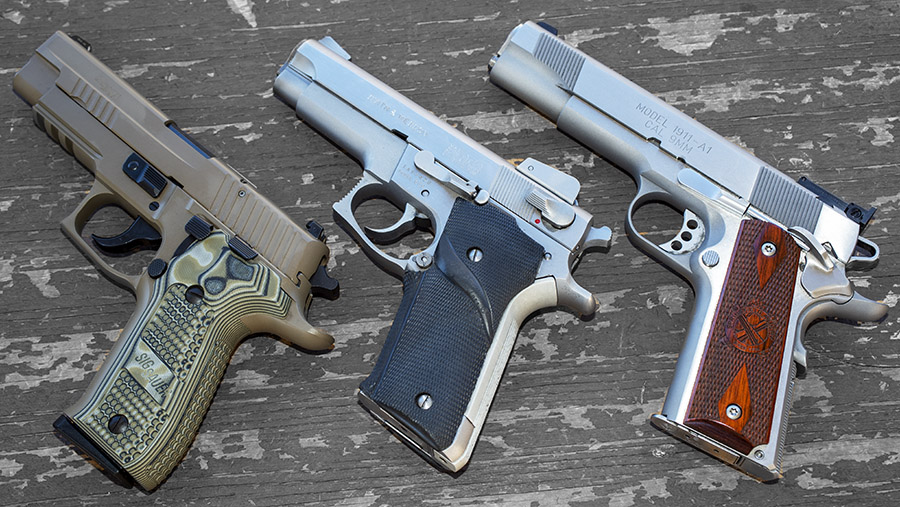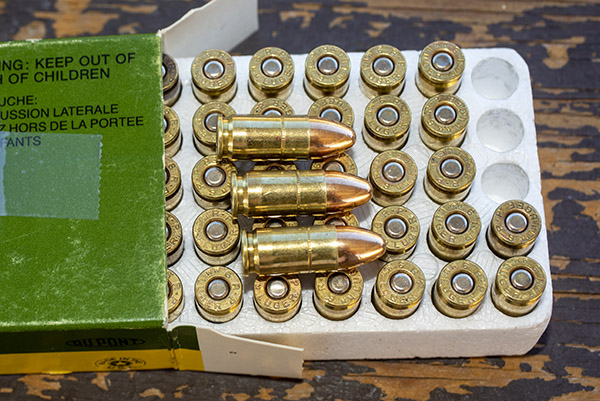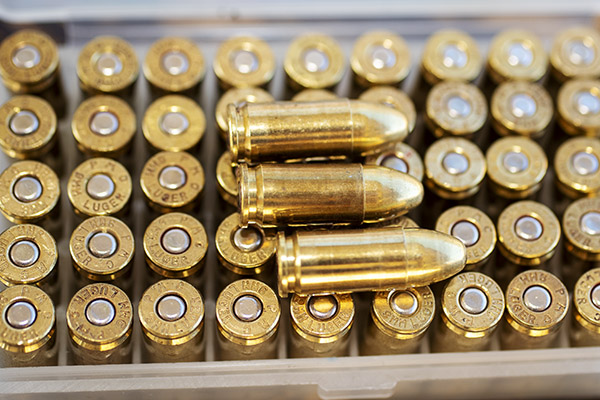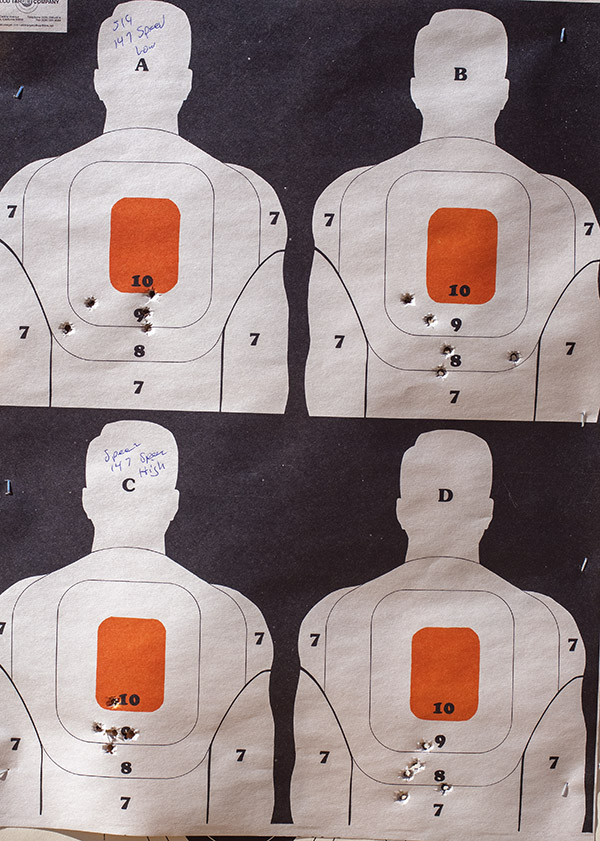By Joe Berk
I had lunch with good buddy TJ (of TJ’s Custom Gunworks) recently and he showed me an LAR Grizzly .45 Winchester Magnum handgun he recently completed. It’s wild. It’s the one you see in the photo above and in the additional photos below. Here’s TJ’s description:
The Path of Bushido, a custom L.A.R. Grizzly .45 Winchester Magnum (it’s a supersized 1911). This handgun is Duracoated with Skulls of Death and Kanji characters depicting the seven Samurai virtues of the Bushido. This magnum features the typical 1911 match action, trigger, and reliability work, as well as barrel and bushing clearance reduction. The gun also has melted edges, a speckled Duracoat finish, a Bullet-guide rod, and Millett target sights with orange DayGlo on the front.
The photos can only begin to the do justice to this stunning handgun (trust me, I’ve seen it in person). And that .45 Win Mag cartridge…think of it as the illegitimate offspring of the already-powerful .45 ACP cartridge (my favorite, by the way) and the .44 Magnum. It’s a very impressive hand cannon.
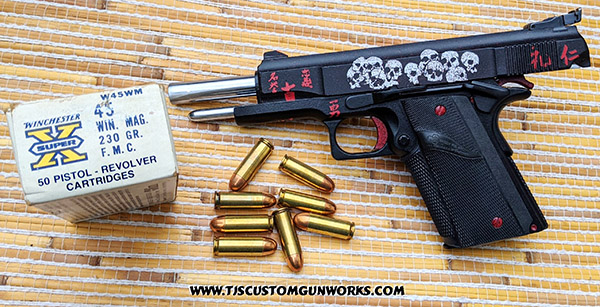

One of the things I like best about TJ’s latest creation is the Millett sights. In my opinion, there are none better. I have these on both my Rock Island Compact 1911 and my bright stainless Colt 1911, and TJ is the pistolsmith who installed them on both guns.
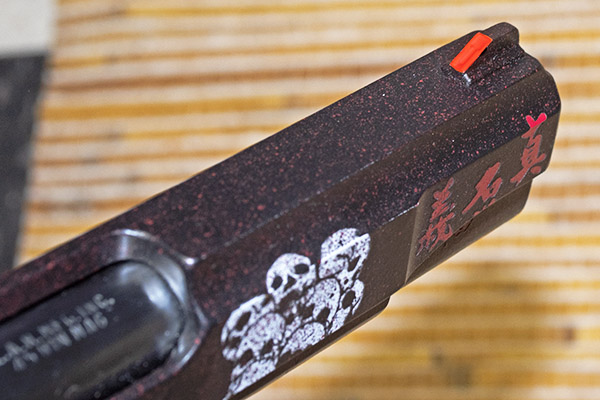

If you were wondering about the Bushido emblems on the Grizzly, here’s an explanation:

I asked TJ what the Grizzly looked like before he worked his magic, and TJ shared this photo with me:
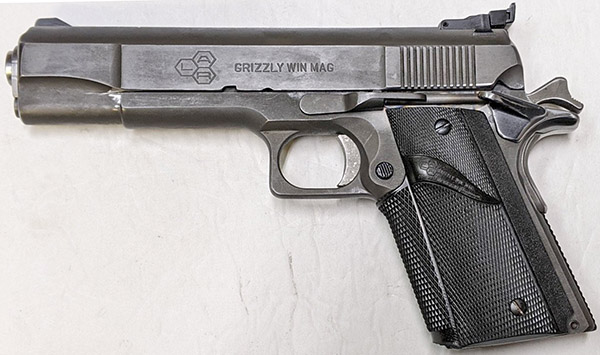
At the end of our visit, I asked TJ what else he’s been up to lately. Take a look. These are magnificent. This first one is a SIG P239 with black camo treatment, a jeweled hammer, a rounded trigger, and lots of internal smoothing and reliability enhancement.

This next one is compact Colt Agent 1911 with Tiger Duracoat and a matching a matching TJ’s knife.

This is another compact 1911 (a Colt Defender) with a camo surface treatment and all the internal reliability action work. It’s not easy to get a compact 1911 to perform, but TJ sure did it on mine. I’ve put thousands of rounds through my TJ-customized Rock Island Compact. TJ took what was a relatively unreliable gun and turned it into a masterpiece.
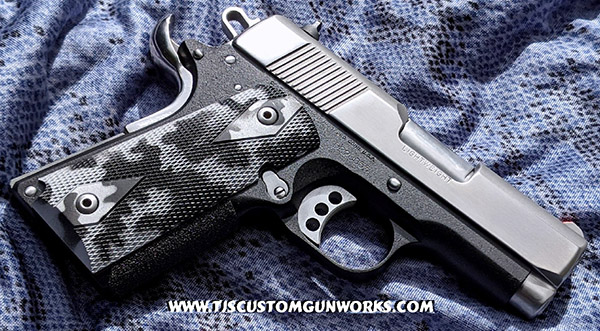
Here’s a TJ-modded Ruger Match Champion revolver, with jeweled bits, recontoured trigger, and an action job.
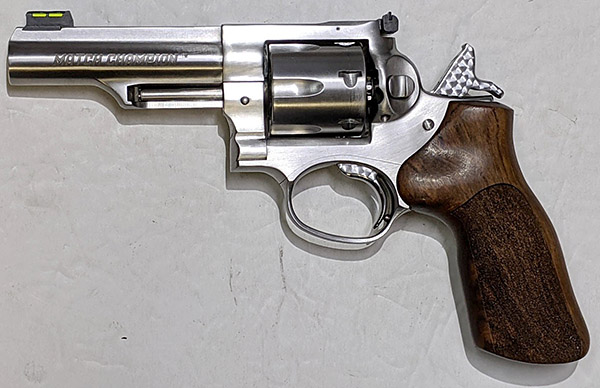
One last photo…this is a SIG P220 grip in which TJ custom inlayed the US government insignia. TJ does a lot of work for senior government folks here and abroad. It’s cool stuff.
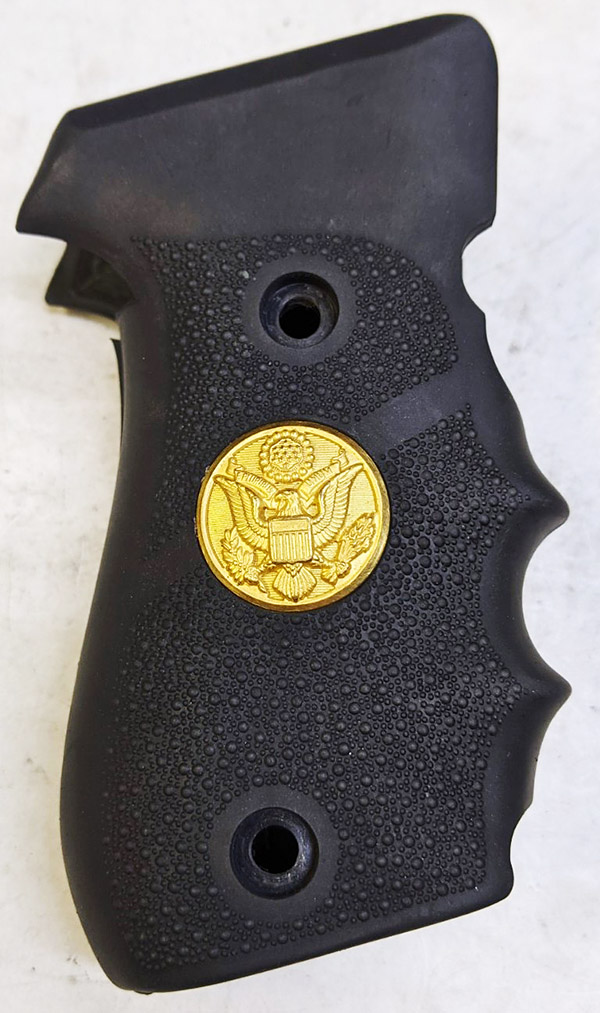
I’ve had six handguns and a rifle customized by TJ, and every one of them is a stellar example of his craftsmanship. These include my Model 59, a bright stainless Colt 1911, my MacManus Colt 1911, the Rock Island Compact, a Model 60 Smith and Wesson snubbie, a Ruger Mini 14, and my new Colt Python. In addition to my guns, folks who follow the ExNotes blog took my advice and had TJ work on their guns, like Marty with his custom Colt Combat Commander, Bob with his Beretta 92, and others who are not listed here. You might have noticed that TJ advertises here on ExNotes. If you want to reach the folks who follow the blog, you might consider doing so, too. You can contact us at info@ExhaustNotes.us and you can reach TJ by clicking on the link below.


